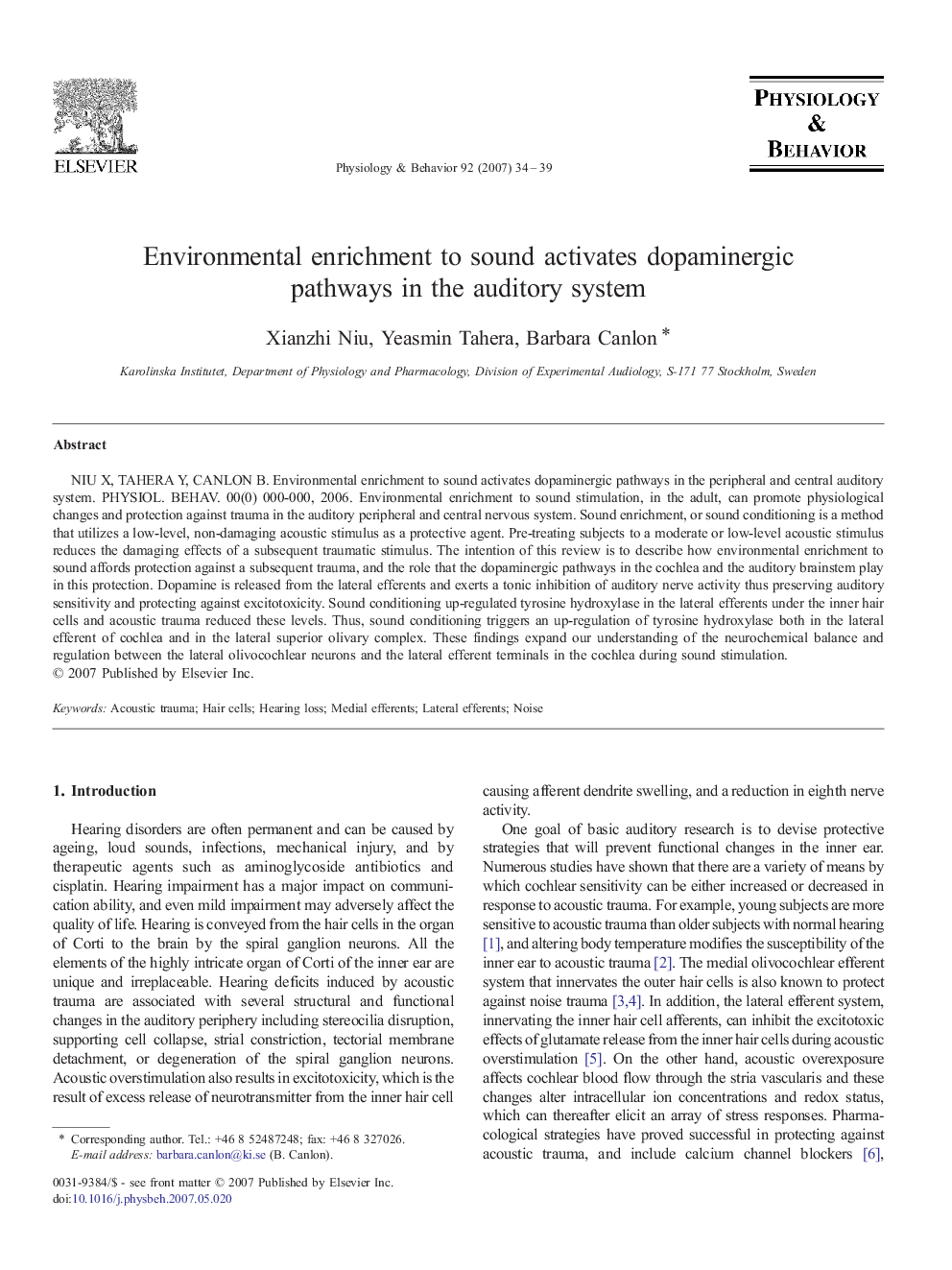| Article ID | Journal | Published Year | Pages | File Type |
|---|---|---|---|---|
| 2845957 | Physiology & Behavior | 2007 | 6 Pages |
NIU X, TAHERA Y, CANLON B. Environmental enrichment to sound activates dopaminergic pathways in the peripheral and central auditory system. PHYSIOL. BEHAV. 00(0) 000-000, 2006. Environmental enrichment to sound stimulation, in the adult, can promote physiological changes and protection against trauma in the auditory peripheral and central nervous system. Sound enrichment, or sound conditioning is a method that utilizes a low-level, non-damaging acoustic stimulus as a protective agent. Pre-treating subjects to a moderate or low-level acoustic stimulus reduces the damaging effects of a subsequent traumatic stimulus. The intention of this review is to describe how environmental enrichment to sound affords protection against a subsequent trauma, and the role that the dopaminergic pathways in the cochlea and the auditory brainstem play in this protection. Dopamine is released from the lateral efferents and exerts a tonic inhibition of auditory nerve activity thus preserving auditory sensitivity and protecting against excitotoxicity. Sound conditioning up-regulated tyrosine hydroxylase in the lateral efferents under the inner hair cells and acoustic trauma reduced these levels. Thus, sound conditioning triggers an up-regulation of tyrosine hydroxylase both in the lateral efferent of cochlea and in the lateral superior olivary complex. These findings expand our understanding of the neurochemical balance and regulation between the lateral olivocochlear neurons and the lateral efferent terminals in the cochlea during sound stimulation.
